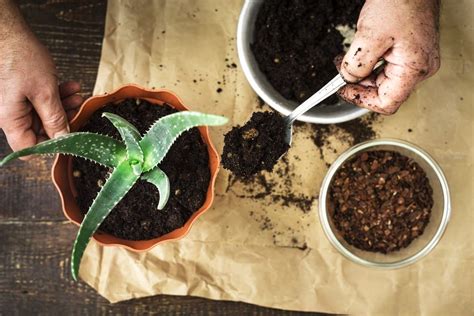Best Practices for Selecting Ideal Soil for Balcony Gardening
Balcony gardening offers a wonderful opportunity to grow plants in urban spaces, but it comes with unique challenges. The key to success lies in selecting the right soil. Choosing the proper soil mix is crucial for providing the necessary nutrients, optimizing drainage, and ensuring healthy plant growth. In this article, we will guide you through the critical factors to consider, provide practical tips, and discuss various types of soil for your balcony plants.
Key Concepts
- Soil Structure: Refers to the arrangement of soil particles that affect water retention and air flow.
- Soil pH: A measure of how acidic or alkaline the soil is, influencing nutrient availability.
- Drainage: Proper drainage prevents waterlogged roots and promotes oxygen flow to plants.
- Moisture Retention: The ability of the soil to hold water, ensuring steady hydration for plant roots.
- Nutrient Content: The level of essential nutrients in the soil, vital for plant health and growth.
Historical Context
The tradition of urban gardening dates back centuries, with early forms of container gardening used by city dwellers in dense urban centers. Over time, gardening techniques have evolved to address the limitations of space, sunlight, and access to quality soil. The idea of selecting soil specifically for balcony plants has become more critical as modern urbanization pushes many gardeners into vertical and small-scale garden spaces.
Current State Analysis
With the rise of urban gardening, the market has responded by offering a wide variety of potting soils tailored to balcony plants. Most available options are geared towards providing moisture retention while maintaining adequate drainage. There are several considerations when evaluating these products:
- Standard Potting Mix: These are pre-made, all-purpose soils that work well for many types of plants but may lack specialized nutrients for particular species.
- Organic Mixes: These mixes use organic matter like compost and coconut coir to enhance nutrient content.
- Soil-less Mixes: Often peat-based, these are lightweight but might not provide enough long-term nutrients.
Practical Applications
When selecting the best soil for your balcony plants, it’s essential to consider the specific needs of your plants, the climate, and the container type. Here are some key tips:
- For Succulents: Use a well-draining, sandy soil mix that mimics their natural environment.
- For Vegetables: Choose a rich, nutrient-dense potting mix that retains moisture but allows good aeration.
- For Flowers: Opt for a balanced mix that provides both nutrients and drainage for optimal growth.
Case Studies
| Plant Type | Soil Requirements | Common Issues | Best Soil Mix |
|---|---|---|---|
| Herbs | Rich in nutrients, moderate drainage | Root rot due to overwatering | Potting mix with added perlite |
| Tomatoes | High nutrient content, well-drained | Cracking due to inconsistent moisture | Organic compost-based mix |
| Orchids | Loose, well-ventilated, low moisture retention | Poor air circulation | Specialty orchid mix with bark |
Stakeholder Analysis
The success of balcony gardening depends on multiple stakeholders, including the home gardener, urban agriculture experts, and soil manufacturers. Each group has different priorities:
- Home Gardeners: Focused on convenience and cost-effective soil options that guarantee plant growth.
- Soil Manufacturers: Aim to meet market demands for diverse soil types while ensuring quality.
- Environmentalists: Advocate for sustainable practices, promoting organic and eco-friendly soil alternatives.
Implementation Guidelines
To ensure successful implementation of the right soil choice for your balcony plants, follow these steps:
- Analyze Your Plants’ Needs: Determine whether your plants require more drainage or moisture retention.
- Choose the Right Containers: Make sure your pots have drainage holes to avoid waterlogged roots.
- Consider Climate: If you live in a hot, dry area, use a mix that retains more moisture. In wetter climates, prioritize drainage.
- Monitor and Adjust: Pay attention to how your plants react and make adjustments to the soil mix as needed.
Ethical Considerations
In selecting soil, consider the environmental impact. Peat-based soils, while excellent for moisture retention, are often harvested in ways that damage ecosystems. Using organic alternatives, such as coir or compost, can provide similar benefits without harming natural habitats.
Limitations and Future Research
There are limitations in the current understanding of the ideal soil compositions for balcony plants. More research is needed on the long-term effects of soil-less mixtures and the sustainability of various organic materials. Additionally, future studies should explore the impacts of container materials on soil health and how they affect plant growth over time.
Expert Commentary
According to experts in urban gardening, the trend towards balcony planting is set to grow as more people embrace sustainable living. However, they stress that the success of these small-scale gardens depends largely on the soil used. Using a tailored soil mix can lead to healthier plants, better yields, and reduced maintenance. Moreover, balancing the trade-offs between drainage and moisture retention remains a challenge, but proper monitoring and adjustments can mitigate common issues. As urban gardeners become more educated on soil options, we can expect innovations in both soil composition and container technology that will enhance the gardening experience.


